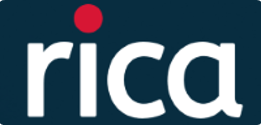Design of a heat exchanger for the reuse of hot gases
Keywords:
hygiene cycle, thermal reuse, numerical analysisAbstract
Postforming cleaning processes use fluids with high temperatures to clean the product. However, this thermal change results in production costs. The objective of this work is to recover the heat of hot gases from the paint ovens to heat the water tank of the hygiene process of parts and thus reduce the cost of production. One of the possibilities for recovery of this thermal energy is the use of a heat exchanger, which is designed for the exhaust system of a curing oven, keeping the positioning adequate for the existing factory layout. Their dimensions were made using both experimental analysis and algebraic methods. To validate the obtained values, the numerical analysis in CFD (Computational Fluid Dynamics) with a reduced model. In addition, we designed the equipment dimensioning to move the fluid economic viability of the project. The thermal exchange area determined for the heat exchanger was 4,64 m2.
References
MORAES, Carmelina S. Análise de medidas para eficientização e uso racional da energia elétrica em condicionadores de ar. 2013. 180 f. Dissertação (Mestrado em Engenharia de Edificações e Ambiental) – Universidade Federal de Mato Grosso, Mato Grosso, 2013.
INSTITUTO FEDERAL DE SANTA CATARINA. Simpósio de Integração Cientifica e Tecnológica do Sul Catarinense. vol 3. Santa Catarina, 2012. 481p.
IMMIG, Joana O. Higienização na indústria de alimentos. 2013. 50 f. Dissertação (Graduação em Medicina Veterinária) – Universidade Federal do Rio Grande do Sul, Rio Grande do Sul, 2013.
CHIAVERINI, Vicente. Tecnologia Mecânica: Materiais de Construção Mecânica. 2ª ed. São Paulo: ABDR, 1986. 388 p.
Downloads
Published
How to Cite
Issue
Section
License
Copyright (c) 2021 Interdisciplinary Journal of Applied Science

This work is licensed under a Creative Commons Attribution-NonCommercial-NoDerivatives 4.0 International License.
Authors keep the copyright and cede to the journal the right of publishing first. Published works are licensed under a Creative Commons Attribution 4.0 International (CC BY 4.0) license, allowing the sharing of the work with recognition of the authorship and initial publication in this journal.






